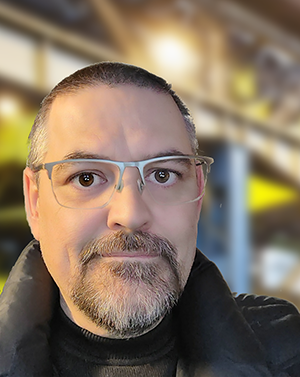Joel François | FRAMATOME – EIRA
12th April 2023
Today, we have the honor of hosting Joel François for a discussion about the use of simulation tools for the training of NDE inspectors at FRAMATOME – EIRA.

Mr. François, you are working at Framatome – EIRA. Could you tell us what the missions of this Framatome entity are?
Framatome is an international leader in nuclear energy, recognized for its innovative solutions that help our customers provide safe and reliable low-carbon energy to consumers around the world.
Our large expertise contributes to our mission: to be the leading designer and supplier of nuclear boiler equipment, services, and fuel with high performance and safety requirements.
EIRA is Framatome’s central monitoring team, and we obviously contribute to these missions. We work on methods that comply with the EN ISO / IEC 17020 standard, an international standard pretaining to the requirements in terms of skill, independence, and impartiality of inspection bodies. The accreditation procedure consists in evaluating the organizational and technical measures deployed by the body to perform inspections, and includes observing the work performed by the inspectors in the field. EIRA is accredited “Type C” according to the EN ISO / IEC 17020 standard, and can therefore also perform inspection activities on behalf of companies outside Framatome, outside the nuclear sector, in the field of supervision of Non-Destructive Testing and welding.
What is your role within Framatome?
Safety comes first at Framatome. This requirement is therefore part of my role and that of my team. We must provide the highest level of security and quality in the provision of our services.
Within EIRA, my role is threefold:
- Technical Manager within the framework of the repeat inspection for the English contracts for the construction of the EPR of Hinkley Point and Sizewell. This involves repeating ultrasonic checks to confirm the factory results and the integrity of large, forged components and welds.
- Technical referent and support in the fields of Non-Destructive Testing (NDT) with our inspectors.
- Training and qualifying inspectors in these same NDT methods, either directly for EIRA or as part of the “Inspection Academy” training school.
You have been using the TraiNDE UT and RT simulators since the end of 2021. What are your main applications for these?
Overall, our industry relies on the expertise and know-how of our employees. The simulators provide hands-on experience that helps our employees prepare and develop their skills in order to perform tasks seamlessly, while qualifying them for operations at our facilities and nuclear power plants.
The TraiNDE UT and RT simulators are mainly used for the discovery of these NDT techniques, for training, and for qualification of our personnel. We have also upgraded our training materials to give them a 2.0 tint better suited to our TraiNDE simulators, which is more in tune with the newer generations.
What is your feedback on these simulators?
In the past, we used to train and qualify approximately one inspector per year in the ultrasound field by obtaining a level 2 Ultrasound according to the ISO 9712 standard. Since the acquisition of the simulators, we have trained a dozen inspectors in a little over twelve months. These new tools generate better learner concentration, as they are now very much in tune with these digital technologies.
You recently joined the GT 3.1 working group of the OPafend (Training and Professions Committee of COFREND) on the integration of simulation into NDT training courses. In your opinion, how can simulation tools / simulators bring added value?
Simulators are an invaluable aid for training, but it must remain coupled with real experience. With simulation tools, we are able to create an infinite number of exercises at a lower cost. However, we must remain vigilant on the new aspects of these technologies and ensure their maturity (absence of bugs, etc.), so that they are not just a fad and don’t end up being put away in a cupboard later.
Do you think it possible to use such tools for exams and certifications?
My first idea would be for the exam and certification in the field of industrial radiography. This would make it possible to overcome the radiation protection constraints they entail. For the field of ultrasound, it is just as possible. The difficulty would come from locking the system so that a rejected candidate does not question the machines. This is why I also mentioned the necessity to wait for the maturity of these technologies.
